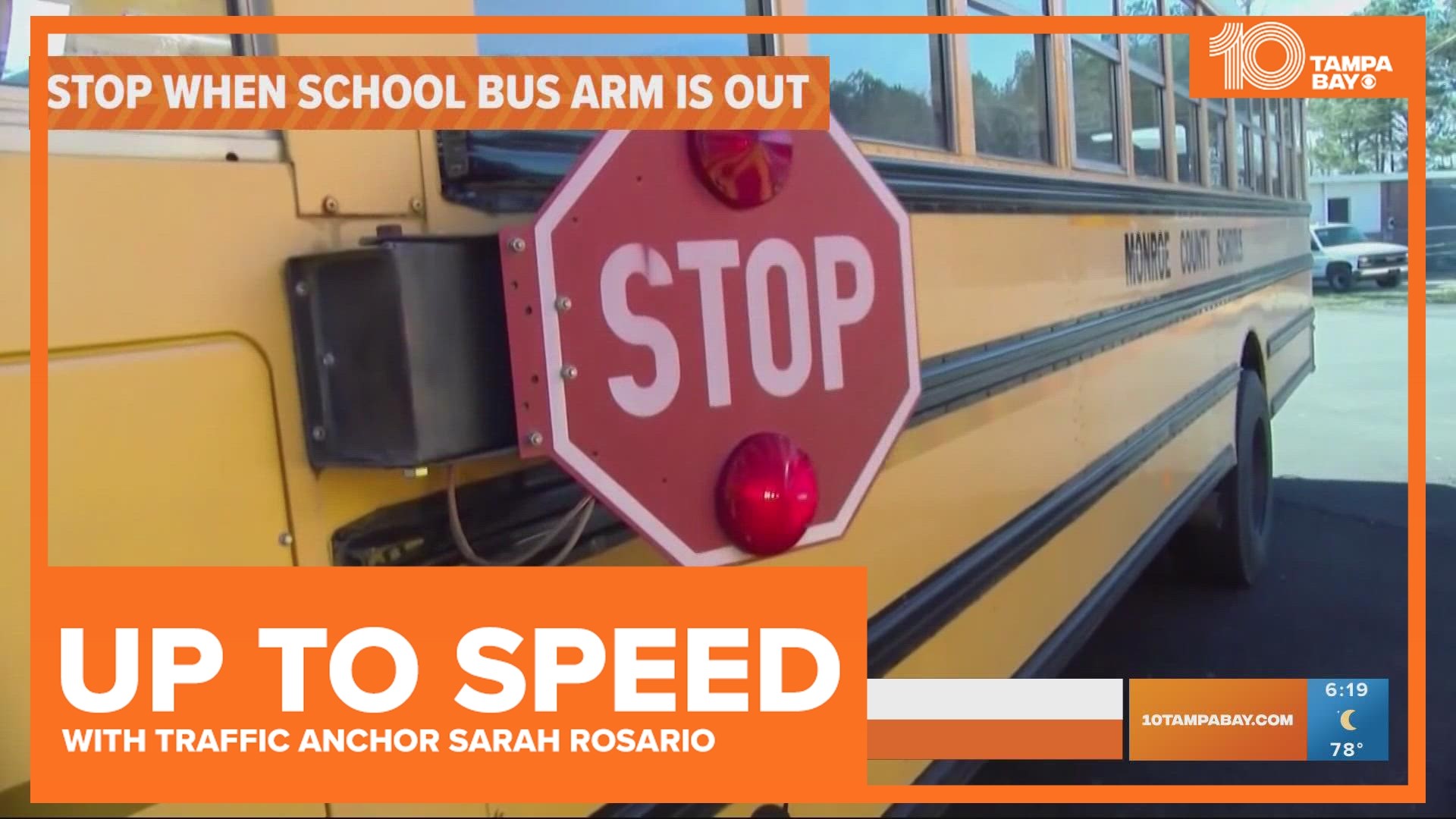TAMPA, Fla. — As thousands of students head back to class, it means traffic is about to get heavier — especially in school zones.
It's why everyone from local law enforcement agencies to school districts and even AAA are sending out messages reminding drivers to slow down, stay aware and avoid distractions anywhere in or around a school.
As classes resume, expect an increase in congestion, pedestrians, buses, and bicyclists.
Here are things to keep in mind: when flashers are blinking, stop and yield to students, pedestrians or anyone crossing in the crosswalk or intersection.
Always stop for a school patrol officer or crossing guard holding a stop sign. Be extra careful near playgrounds, parks and in all residential areas near a school.
“Drivers should have a heightened sense of awareness from the moment they leave the driveway,” said Mark Jenkins, spokesman, AAA – The Auto Club Group. “Students will be walking or pedaling throughout neighborhoods and alongside city streets, making their way to and from school or the bus stop. Many of them might not be looking for you, so make sure you’re looking for them.”
Always remember to follow school bus safety rules as Florida law requires drivers to stop for a school bus with its red lights flashing and stop arm out as children are getting on and off the bus. The only exception is on a divided highway with a raised divider.
Here are some other school zone safety reminders from AAA:
- Slow down. Speed limits in school zones are reduced for a reason. A pedestrian struck by a vehicle traveling at 25 mph is nearly two-thirds less likely to be killed compared to a pedestrian struck by a vehicle traveling just 10 mph faster.
- Come to a complete stop. Research shows that more than one-third of drivers roll through stop signs in school zones or neighborhoods. Always come to a complete stop, checking carefully for children on sidewalks and in crosswalks before proceeding.
- Eliminate distractions. Research shows that taking your eyes off the road for just two seconds doubles your chances of crashing.
- Share the road with bicyclists. Children on bicycles are often inexperienced, unsteady and unpredictable. Slow down and allow at least three feet of passing distance between your vehicle and a bicyclist.
- Talk to your teen. Car crashes are one of the leading causes of death for teens in the U.S., and nearly one in four fatal crashes involving teen drivers occur during the after-school hours of 3 p.m. to 7 p.m.
AAA also wants to remind students, bicyclists and pedestrians to do their part to stay safe on the roads.
For pedestrians:
- Pay attention at all times. Avoid texting or wearing headphones, so you can detect nearby traffic.
- Use sidewalks where available. If not, walk against the direction of traffic so you can see oncoming vehicles.
- Make yourself easier to see by wearing reflective, bright-colored clothing.
For bicyclists
- Wear a helmet and neon or bright-colored clothes.
- Ride in the same direction as traffic and stay as far to the right as possible. Use bike lanes when you can.
- Do not wear headphones so you can detect approaching traffic.
- Cross the street at intersections. Do not pull into the roadway from between parked cars.
For students at the bus stop
- Arrive at least 5 minutes before the bus is scheduled to arrive.
- Stay five steps away from the curb.
- Be alert and remove headphones so you can hear oncoming traffic.
- Wait until the bus comes to a complete stop and the bus driver signals for you to board.

